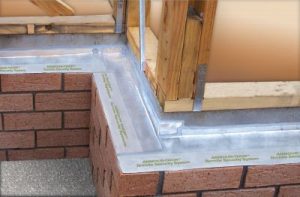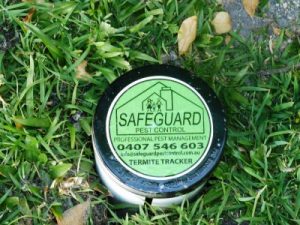
Termites are a destructive force that affects the households in many countries.
There’re many DIY or professional methods that promise to help you to get rid of termites once and forever.
But does it exist, the anti-termite treatment that can guarantee you will never have to face the infestation again, even in the areas famous for the pest problems?
There’s one solution, that is offered to the house owners in Australia, that promises to do just that. I’m going to tell you about Home Guard Precision Termite Management System by FMC.
Hide content
- What is FMC?
- Which termites?
- What type of treatment is HomeGuard?
- What does HomeGuard consist of?
- Useful articles
- Helpful video
- Summary
What is FMC?
FMC is an old trademark, it has been established more than hundred years ago as a modest firm, producing insecticide pumps.
Since then it developed to be fully grown multidivisional corporation with many different products.
In 70-s the FMC created its own termiticide chemical, that was based on the natural insecticide produced by white daisies.
The name of this chemical is Bifenthrin and now all the anti-termite treatments produced by FMC are based on it.
For example, Bifenthrin is an active ingredient for Biflex soil treatment and barrier brand.
One good thing about having such a huge corporation producing the termiticide, is the reputation the firm has to keep. In case of FMC, their HomeGuard termite barrier is not only backed with years of research, but also with the unbeatable FMC Million Dollar Manufacturer’s Warranty against subterranean termites’ damage.
Because the Australian general insurance doesn’t cover termite damage they offer their own one. This warranty is valid for 25 years with the condition of annual inspection by licensed Pest Control Operator, according to Australian Standards.
Important! For the issue of the warranty, the installation of the HomeGuard termite protection system should be carried out by trained HomeGuard Accredited Operators.So, these guys are so sure that their product is protecting you from termites, that they are ready to give you million dollars if they are wrong. That’s a biggie! But which termites they offer to fight and what method to use?
Which termites?
The treatment offered by HomeGuard is aimed against subterranean termites. What is special about this species? The main difference between drywood and subterranean termites is the colony location. The later build their nest in the soil, where they can find enough moisture.
Learn more about drywood termites: signs of their activity; best methods of treatment: spot treatment and DIY methods; how to get rid of them in furniture?
The biggest problem is that you almost never can tell where is the nest, it can be quite far away from your house or even to be placed not on your land, but the foraging worker termites will pay you visits.
These termites enter your house from the outside, usually through some wood contacting with the soil, especially if it’s a wet wood.
Once starting to forage in your house, the subterranean termites can bring huge destruction, especially if they find the structural timber on their way.
So, the main methods of fighting subterranean termite infestations do not have as their main purpose killing the workers, that are actually eating your wood, but their goal is to stop and prevent the termites from entering the house.
This is why the main treatment against this species is soil barrier, that doesn’t allow the termites to find the entry points.
Learn more about subterranean termites: signs of their activity; best methods of treatment and DIY methods. Eastern subterranean termites and their tunnels and tubes with photo.
Other popular item on the market is biting systems, that allow you to monitor termite activity around your house and, when needed, poison the foragers with the delayed effect termiticide, that they bring to the colony.Here you can learn more information about termite bait systems: Advance, Green, CSIRO, Nemesis, Exterra, Firstline, Terminate. Also find out how to make baits by yourself and how to refill them?
What type of treatment is HomeGuard?
HomeGuard System is falling into the category of physical barriers. As you understand, this means that with this one the termites physically won’t be able to enter your house. Sadly, this is not something you can do when you already have termites’ problem. It’s also not a DIY thing. It’s a whole professional preconstruction preventive measure.
If you struggle to understand how the physical barrier works, let me paint you a simple picture. Imagine, that, during the construction works, all the cellulose materials that are in contact with soil are wrapped into plastic, being sealed like this completely.
This will mean, that, if the wrapping is done correctly and there are no holes, the termites will never manage to take a bite. Just like this.
But HomeGuard system is not just sheets of plastic material (though the big part of it is), it’s also specially designed features that protect the cavities, slabs, frames etc. And in addition to the physical simple barrier, the HomeGuard is also offering chemical protection.
The special polymer, designed by FMC, is incorporating their Bifenthrin chemical, that allows the barrier not only block, but also repel and kill termites that come in contact with it.
The Bifenthrin itself can hardly be called an eco-friendly chemical, but build in the polymer it loses most of its dangerous characteristics.
It cannot be washed with water off the material, so it will not contaminate any wildlife habitats.
It also doesn’t irritate the skin, so the builders installing it will not need to wear any special protection.
So, finally, it’s more green way of termite fighting than you could have thought.
Here you can learn more information about effective termite control remedies: Bora-Care, Boric acid, Borate, Fipronil, Chlorpyrifos, Chlordane, Borax, Timbor, Termidor, Terminator, Phantom, Lorsban, Biflex, Terro. You can choose different forms, such as – foam, liquid, powder.
What does HomeGuard consist of?
HomeGuard System has several elements, that has to be combined for fitting the design of your building.The components available are:
- HomeGuard TMB (Termite & Moisture Barrier);
- HomeGuard PB (also called HomeGuard Blue);
- HomeGuard DPC (Damp Proof Course);
- HomeGuard Collars;
- HomeGuard FlexiCollars;
- HomeGuard GT.
HomeGuard TMB is a high impact 200-micron sheet with Biflex termiticide incorporated. It is used for the proofing against termites of retaining walls and steps down In slab.
HomeGuard Blue is a main perimeter and cavity barrier and it’s used when damp proof is not needed. It is a polymer sheet of 300-micron, impregnated with termiticide.
HomeGuard DPC is the sheeting more tough than others with its 500 micron and UV stabilization. Of course, it also has Biflex in its structure and it can be used for protection of the retaining walls as a perimeter and cavity barrier.
HomeGuard Collars and FlexiCollars are available in different sized and are designed for prevention of concealed termite entry via penetration. You can use them for tight fit around PVC pipes and other possible penetration areas.
Simple Collars are rigid and FlexiCollars are adjustable, so if you have the pipe that is not the diameter of the Collars range, the use of FlexiCollars will solve this problem. Of course, both have the chemical protection inbuilt.
And, finally HomeGuard GT is the granule filling made of plastic, that contains Biflex termiticide and can be added to the areas where flexibility is needed and the plastic sheeting isn’t practical. It also can be used as a full perimeter filling material.Useful articles
If you interested in more information of termites we recommend you to read the following articles:
- All types of termites. Are they harmful to humans? Can they bite you? And what is the difference between drywood and subterranean ones?
- What does swarmers of different species look like: drywood, subterranean, formosan?
- Signs of infestation outside and in the house: in walls or furniture.
- How to treat them at home and in the yard: in wood or in fence. How long this process lasts and what is pre-construction and soil treatment?
- What does termite holes look like? What is droppings and is it toxic to humans? Do termites make noises?
- Posible termite damage, how does it look like? Examples of damage in walls and wood floors.
- All about flying termites: how do they look like, swarming season and what to do if there are swarmers in your house?
- How do they do nests and mounds? How to find it in your garden or inside the house?
- Termite life cycle – from egg to larvae. And social hierarchy: workers, soldiers, queen.
- Did you know that termites can infest living trees, for example a palm or a pine tree. They also like to live in stumps.
- You can prevent the infestation by using barriers, such as: Physical systems, Safeguard, Stainless steel mesh, Kordon.
- If you want to get rid of termites naturally, learn more about such methods as: heat or cold treatment, orange oil, using nematodes.
Helpful video
An Introduction to HomeGuard Termite Barrier:
Summary
After all this what we have learned about HomeGuard System?
- It’s a pre-construction prevention method against subterranean termites’ infestation.
- It’s basically different sheets and other forms of polymer impregnated with termiticide, that are placed in construction process, protecting all possible termite entry points that come in contact with soil.
- There’s a whole range of different types of polymer sheets designed for the use in different designs, under the walls or slabs. It also has special collars that can protect the PVC pipes and granules that will allow to fill all the spaces where the sheeting is not convenient.
- FMC offers manufacturers million dollars’ warranty for 25 years after construction.
- It’s an anti-termite treatment that should only be installed and monitored by professionals.
- It’s quite eco-friendly and not dangerous to people or pets.
Honestly, of you ask for my opinion, I think this is an investment worth making. If you’re already building a house of your dreams, why not to make sure that you can sleep calmly in it for almost 50 years! Not letting termites to step foot in my wood? Yes, please!


